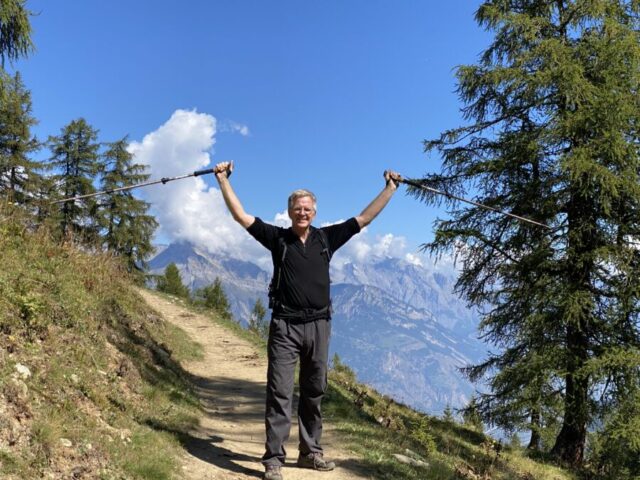[ad_1]

Earlier this fall, four of us — total novices at long-distance treks — hiked around Europe’s highest mountain. (On the first day, big birds of prey circled high overhead. My hunch: They were vultures just waiting for one of us to drop.)
The Tour du Mont Blanc is a 100-mile, ten-day hike — but we cheated a bit, hiking the best 60 miles in six days from mountain lodge to mountain lodge, catching local buses through the less exciting parts, and letting a “sherpa service” shuttle our bags each day through France, Italy, and Switzerland, from Chamonix to Chamonix.



This was the first time I’d enjoyed a slice of Europe with my girlfriend Shelley, and we were joined by Sue and David from Minnesota. (I’ve worked with David Preston for 20 years at TPT – Twin Cities PBS. In the public television world, he’s considered the “pledge drive guru.”)

Each day, we’d hike what the trail signs said would be a five-hour hike — that took us six or seven. Our mantra: “Take our time. This is why we’re here.” Generally, the day would start at a 3,000-foot climb to a pass (or “col”) 8,000 feet above sea level. Each col was a little triumph, with its cairn of rocks arranged in a pile, dramatic weather blowing across, commanding views, and congratulatory selfies.

Part of our pre-trip training was taking steep hikes closer to home. As a typical day’s climb on the TMB is a thousand meters (or roughly 3,000 feet), I’d recommend choosing a practice hike with a 3,000-foot elevation gain so you can use it as a reference point. Ours in Washington State was the Mount Si trail. We even had a term for a 3,000-foot altitude gain: “a Mount Si.”

[ad_2]